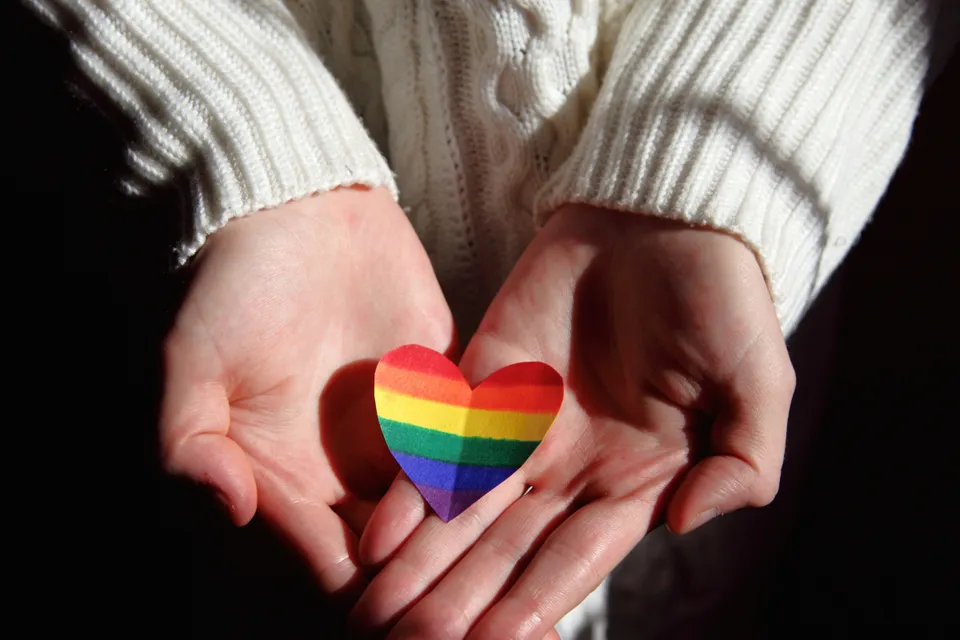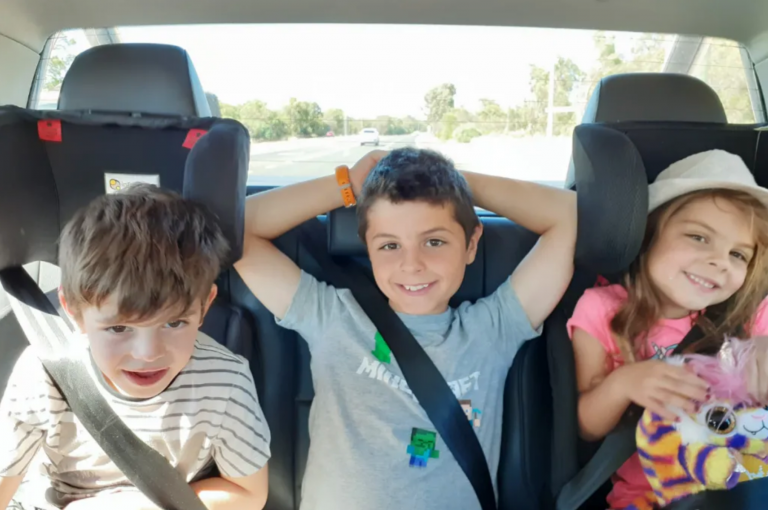The long and short of it:
- Just as there is diversity within the LGBT+ community and in the way that families are formed, there’s also diversity in the language used to describe LGBT+ parents, caregivers, and families.
- Show your support as an LGBT+ ally by learning how neutral and nuanced language is currently used across the diverse LGBT+ community.
- You can show respect for gender identity by using a person’s preferred pronouns.
- Mistakes happen. If you use the wrong language, simply correct yourself and move on.
Families come in all shapes and sizes. It’s estimated that as many as 3.7 million children under the age of 18 in the US have an LGBT+ parent, and overall, it’s estimated that 29% of LGBT+ adults are raising a child who is under 18.¹
For LGBT+ parents and caregivers, finding language that fits the unique nature of their family is important as they make their own transition to and throughout parenthood. In addition, more and more coworkers, friends, and managers are striving to be active allies, and using inclusive language is a powerful way to demonstrate support.
The LGBT+ ‘community’ is often referred to as a group of people who share some things in common, and within this community, there is also diversity. Whilst there will be similarities, each group of people within the LGBT+ community has unique parenting and caring experiences. When it comes to LGBT+ communities in a parenting and caregiving context, it’s also helpful to remember that people within these communities:
- May or may not use language and titles that people outside the LGBT+ community use when planning or raising families.
- May or may not know other people or other parents who are LGBT+.
- May or may not share the same fertility and family planning experiences as those outside the LGBT+ community.
Language is ever-evolving and there is not a one-size-fits-all solution. Understanding how neutral and nuanced language is currently used across the diverse LGBT+ community is a good start. The use of these terms may not be universally used or accepted by everyone within the diverse LGBT+ community and this is intended as a guide only. It’s helpful to pay attention to the language used by the person you are engaging with and mirror their language. E.g. if they say partner, don’t make assumptions and say wife or husband, simply mirror their choice of words.
Mistakes can happen and if you get it wrong, simply correct yourself and move on. Don’t panic or spend time explaining why you got it wrong because this takes the focus away from the person and prioritizes your own feelings rather than theirs.
Non-exhaustive glossary of terms for LGBT+ parents, caregivers, and familiesPartnerA neutral term used to avoid assuming someone’s gender or marital status. DonorFamily formation with the assistance of donated gametes such as eggs, sperm, or embryos (combined eggs and sperm), is known as third-party reproduction or donor conception. Individuals or couples who receive the donation are called recipients and those who provide the donation are called donors. Donors can be known or anonymous depending on a range of factors such as choice and local legislation and access to fertility programs. Individuals and couples may or may not be from the LGBT+ community. SurrogateSometimes also called a gestational carrier, a surrogate is a person who carries and gives birth to a child for another person or couple (intended parent/s). The surrogate agrees to give the child to that person or couple after the birth. Parent or ParA neutral term for parent, mother, father, etc.Maddy, Zaza, BabaNeutral terms that combine mummy/mommy/mamma and daddy/dada. (Note, baba means dad in some languages and grandmother in others.)SiblingA neutral term instead of sister or brother to describe one of two or more individuals having one common parent.PiblingA neutral term to describe your parent’s sibling instead of gendered uncles or aunties.Auncle, Untie/UntyA neutral term to describe your parent’s sibling instead of gendered uncles or aunties combining aunt and uncle.NiblingA neutral combination of niece/nephew and sibling.ChiblingA neutral term to describe the children of your sibling.ChildA neutral term for a young person of any gender. KidAn informal and neutral term for a young person of any gender. Grandparent or GrandyNeutral terms for grandparent, grandma, grandpa, etc.GrandchildA neutral term for a young person of any gender who is the child of their own child (instead of grandson or granddaughter).
What about pronouns?
Pronouns such as he, she, and they specifically refer to the people that you are talking about. It is important to respect people’s pronouns. You can’t always know what someone’s pronouns are by looking at the person. Asking and correctly using someone’s pronouns is one of the most basic ways to show respect for gender identity.
Finally, if you encounter language in processes or places and feel it could be more inclusive, use that opportunity to offer your feedback. If you are filling in a form and you think it should have additional space for pronouns, pop a note on the form for their consideration.
Written by Gemma Saunders GAICD, Founder of Workplace Edit. We also thank our transgender and queer guest contributors who co-wrote this article.
Sources:
¹ Family Equality Council, LGBTQ Family Fact Sheet, August 2018
The future of children – Princeton – Brookings, Marriage and child well-being revisited, Vol 25, No 2, Fall 2015
Williams Institute, LGBT Data and Demographics, 2019
United States Census Bureau, U.S. Census Bureau releases CPS etimates of same-sex households, November 2019
The term LGBT+ refers to people who identify as lesbian, gay, bi-sexual, transgender, intersexual, questioning/queer, asexual, and other gender non-conforming identities.


